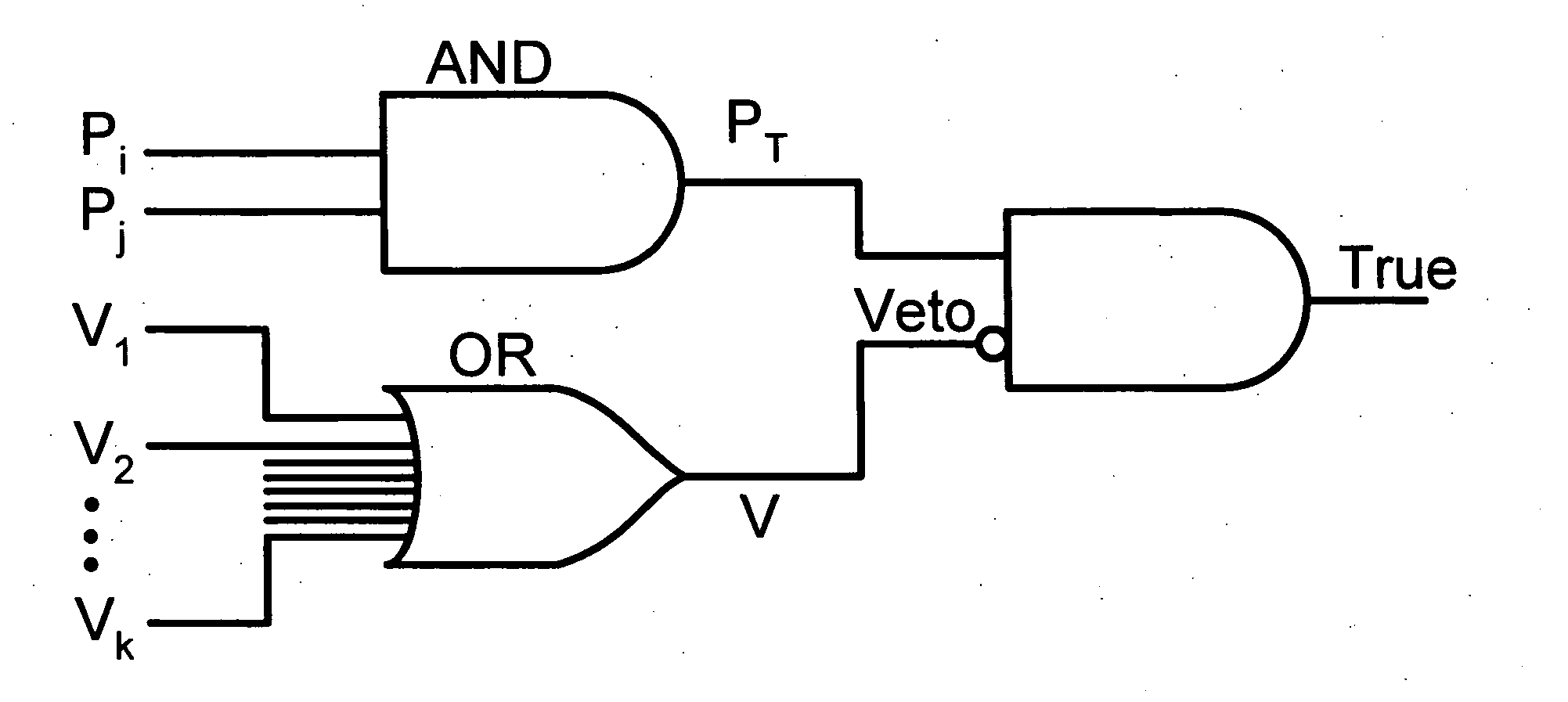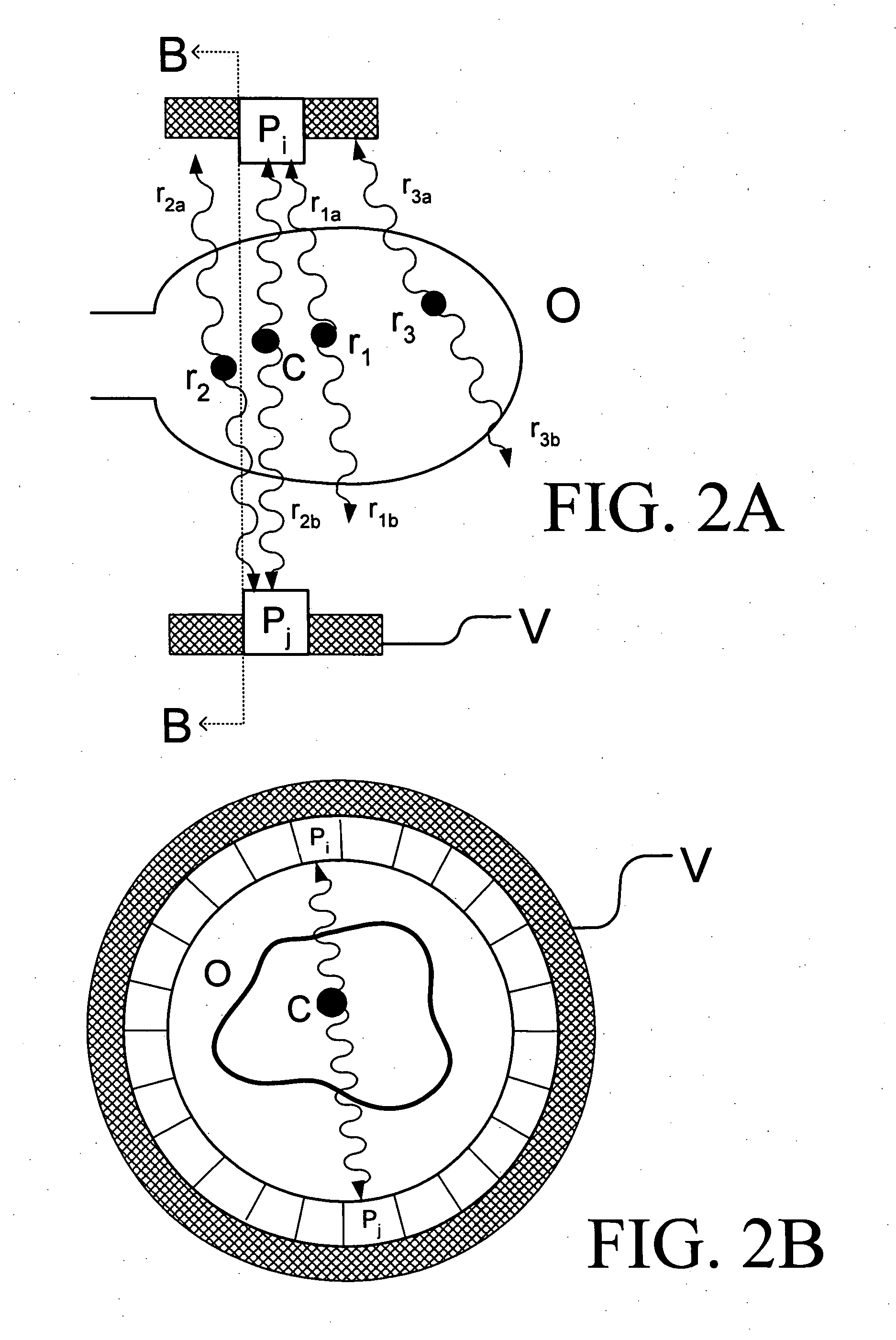Method and apparatus for vetoing random coincidences in positron emission tomographs
a technology of positron emission tomograph and random coincidence, which is applied in the field of methods and apparatus for vetoing random coincidences in positron emission tomograph, can solve the problems of insufficient accuracy of resulting generated images, inability to accurately detect inability to accurately predict the position of the object, so as to reduce the loss of “true” event data, reduce the number of false vetoes, and improve the quality of detection data and the resulting
- Summary
- Abstract
- Description
- Claims
- Application Information
AI Technical Summary
Benefits of technology
Problems solved by technology
Method used
Image
Examples
Embodiment Construction
[0027] The present invention is directed to an apparatus and method for eliminating or severely reducing random coincidences in PET tomographs, thereby improving the accuracy and resolution of the tomographs. The system consists of gamma ray detectors which are arranged to detect photons not registered in the tomograph along with an electronic logic system that vetoes or eliminates from further consideration those events in which additional signals are detected. In this manner, events with random coincidences will not substantially reduce the statistical significance of the image data consisting of true coincidences. Exemplary gamma ray detectors and their operation are detailed in the inventor's U.S. Pat. No. 6,100,532, and in published U.S. patent applicaltion No. 2004 / 0007670, the disclosures of both are hereby incorporated in their entirety by reference.
[0028] In conventional PET tomographs, signals from selected sets of detector element pairs are accepted if they occur within ...
PUM
 Login to View More
Login to View More Abstract
Description
Claims
Application Information
 Login to View More
Login to View More - R&D
- Intellectual Property
- Life Sciences
- Materials
- Tech Scout
- Unparalleled Data Quality
- Higher Quality Content
- 60% Fewer Hallucinations
Browse by: Latest US Patents, China's latest patents, Technical Efficacy Thesaurus, Application Domain, Technology Topic, Popular Technical Reports.
© 2025 PatSnap. All rights reserved.Legal|Privacy policy|Modern Slavery Act Transparency Statement|Sitemap|About US| Contact US: help@patsnap.com



